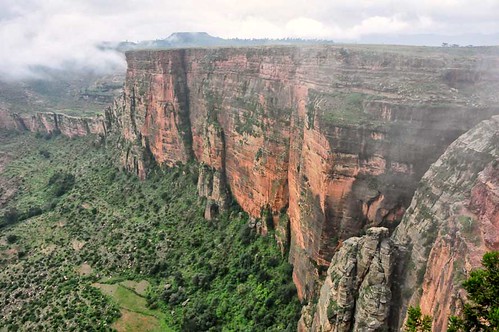The power and communications blackouts that followed Ethiopia’s bombing of Tigray’s regional capital, Mekelle, are an ominous sign that this conflict is far from over and risks spiralling into a full-blown civil war.
The world is rightly focused on the humanitarian plight of the innocent people in the region and the growing numbers of refugees — 40,000 and counting — who are fleeing to neighbouring Sudan. The Wa Tigrai are caught in the middle of a bitter power dispute between the former dominant tribe and Ethiopian Prime Minister Abiy Ahmed.
It is not just the bloodshed that will leave an indelible mark on Ethiopia. This conflict can have regional and economic consequences, far beyond the Tigray region. Ethiopia’s economy will take the first hit. The government has been pursuing a privatisation strategy to boost foreign investment and raise foreign exchange. In a preview to a partial sell-off of state assets, such as rail, infrastructure and land, Ethiopia is releasing two mobile licences and a minority stake in Ethio Telecom to private operators and investors.
This process is now in jeopardy as investors monitor the situation in the north carefully. So are Kenya’s Equity Bank and KCB Group. They have been courted by the government to open representative offices as it makes modest moves to liberalise its “tightly controlled financial sector”. They won’t like the political instability.
Beyond Ethiopia, its immediate neighbours will be watching closely. Eritrea is being drawn into the conflict after reports of missile attacks on its cities and the mobilisation of Eritrean soldiers to the front. For now Sudan is the focus of fleeing refugees. But according to Horn of African experts Nizar Manek and Mohamed Kheir Omer, it might be the Sudanese who draw this conflict into a regional war.
Sudan is looking for concessions on a 260km² territory, the Fasqa triangle, along its border with the Amhara state. Sudan has hinted that it might supply military and humanitarian logistical support to the Tigray People’s Liberation Front if the Ethiopian government does not bend on its insistence to manage the flow of the Blue Nile on a “discretionary basis”.
The Grand Ethiopian Renaissance Dam, on the Blue Nile River, looms large in this conflict. A contender for most elaborately named dam on the continent, it is also one of the most contested. Just weeks before this round of violence began US President Donald Trump seemed to justify Egypt’s veiled threats to blow the whole thing up. The US hinted at withholding about $100m in aid to Ethiopia as it moved forward with plans to fill the dam without addressing Egyptian and Sudanese concerns about the flow of water.
The Ethiopian government began building the $4bn dam in 2011. It is funded by government bonds, taxes and local donations, and is set to be the largest hydropower generation station in Africa. Once complete it should improve electricity access across East Africa. But to do this Ethiopia needs to retain water that would have otherwise flowed downstream. Ethiopia contends that it supplies 85% of the water that flows into the river and therefore has a right to use its natural resources to reduce poverty and raise living standards for its people and the region. The dam is a source of national pride.
The flow of the water is the most contentious issue. Egypt, which is totally reliant on the Nile for its water needs, argues that Ethiopia is filling up the dam without agreeing on the terms of down-water retention. Egypt is not guaranteed a specific volume once the dam is filled and is worried what will happen when there is drought. Sudan is concerned that the dam will overflow and flood its lowlands. Ethiopia, on the other hand, has long distrusted Egyptian hegemony over the Nile.
The negotiations are not going well. Two weeks ago Sudanese irrigation minister Yasir Abbas boycotted talks until an international mediation body is established. The parties had failed to agree on the role the AU, EU and US would play to end the eight-year trilateral talks.
Talks on the dam are reaching a critical juncture. The current hostilities and growing international horror at Ethiopia’s actions might embolden Ethiopia to go ahead anyway with filling the dam. Sudan and Egypt would need to decide how to respond. So would neighbours, such as South Sudan, who feed off the White Nile tributary. With trust at an all-time low and a brewing civil war that could engulf the region, a water war is the last thing anyone needs.
This piece was originally published in BusinessDay on 7 December 2020.


